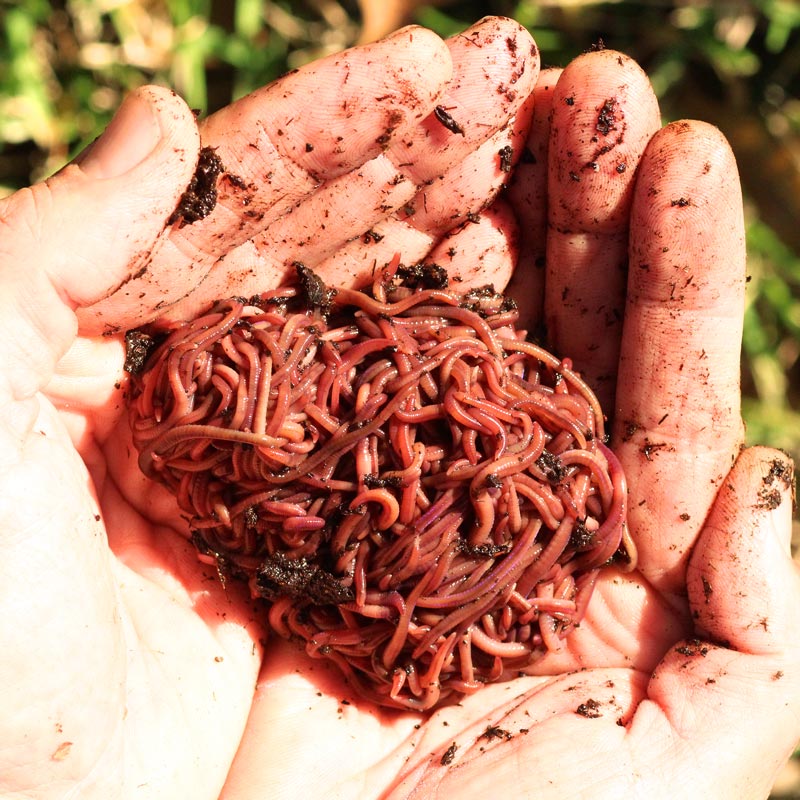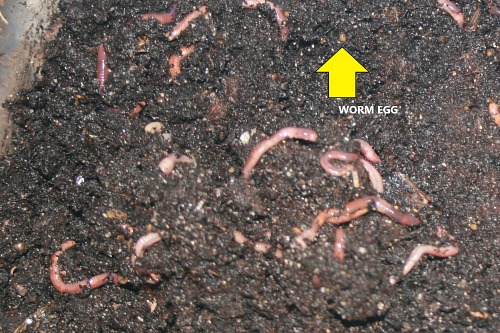Get the Perfect Worms for Your Fishing with Red Wiggler Express
Get the Perfect Worms for Your Fishing with Red Wiggler Express
Blog Article
Red Wigglers: The Unsung Heroes of Organic Waste Recycling
Red wigglers, or Eisenia fetida, work as essential representatives in the natural waste recycling procedure, transforming disposed of materials into useful vermicompost. Their effective failure of organic matter not just enhances soil high quality but likewise contributes to lasting waste monitoring techniques. As the globe significantly looks for solutions to combat waste accumulation and improve farming productivity, understanding the role of these worms comes to be important. What mechanisms allow them to grow in garden compost settings, and exactly how can they be effectively made use of in both household and business settings? Exploring these inquiries discloses the more comprehensive effects of vermicomposting in our eco-friendly landscape.
What Are Red Wigglers?
The exceptional resilience of red wigglers, scientifically referred to as Eisenia fetida, underscores their critical role in natural waste recycling. These little, reddish-brown earthworms are commonly discovered in decomposing raw material, such as garden compost piles and manure stacks. Lake Hickory Bait. Unlike various other earthworm species, red wigglers grow in nutrient-rich environments and are extremely efficient at damaging down organic products, making them important for vermicomposting

(Red Wiggler Express)In addition to their function in waste reduction, red wigglers add to soil health by enhancing soil structure and oygenation via their tunneling activities (Lake Hickory Bait). Their presence in composting systems not just enhances decay rates however likewise advertises a lasting approach to lose administration, illustrating their importance in environmental conservation initiatives
Benefits of Composting With Worms
Composting with worms, specifically red wigglers, offers various advantages that boost both waste management and dirt health and wellness. Initially, these worms effectively break down natural waste, converting it into nutrient-rich vermicompost that improves soil. This procedure speeds up disintegration, permitting for a much faster recycling of cooking area scraps and other natural products contrasted to typical composting methods.
In addition, the vermicompost produced by red wigglers is bristling with valuable microbes, which help boost soil framework, oygenation, and dampness retention. This improves the total wellness of plants, promoting vigorous development and boosted yields in gardens and agricultural settings. In addition, making use of worms in composting reduces the production of greenhouse gases, such as methane, adding to a more lasting waste monitoring system.

How to Start Vermicomposting
Developing a vermicomposting system is a simple procedure that can generate considerable advantages for both waste administration and soil enrichment. To begin, choose a suitable container, such as a plastic bin or wood box, with adequate ventilation openings to guarantee appropriate airflow. The measurements need to preferably be about 2 feet by 3 feet, allowing ample space for the worms to prosper.
Next, prepare bed linen material, which can contain shredded paper, cardboard, or coconut coir. This bedding ought to be dampened to develop an ideal habitat for the worms. When the bed linen remains in place, present red wigglers (Eisenia fetida) right into the bin, typically around one extra pound of worms for every single square foot of surface location.
Following the positioning of worms, include natural waste, such as fruit and vegetable scraps, coffee grounds, and crushed eggshells. Prevent adding dairy, meat, or oils, as these can create smells and attract bugs. Lastly, place the bin in a shaded, temperature-controlled location to preserve optimal problems for worm task. With these actions, you will successfully start a vermicomposting system that adds to lasting waste administration and enhances your soil.
Keeping a Healthy Worm Bin
(Red Wiggler Express)Maintaining a worm bin growing calls for normal interest and treatment to make certain the wellness of the red wigglers and the performance of the composting process. Appropriate upkeep starts with keeping track of the wetness degrees; the container ought to be damp but not soaked. A good general rule is to keep a consistency similar to a wrung-out sponge.
Carefully blending the bedding and food scraps every couple of weeks protects against compaction and makes certain that all worms have access to oxygen. In addition, it is vital to feed the worms suitably.
If the container becomes as well hot or chilly, the worms might end up being stressed. By faithfully handling these variables, one can preserve a robust and effective worm container.
Impact on Lasting Living
The effective maintenance of a worm container not just benefits the health and wellness of red wigglers however also contributes significantly to lasting living practices. By recycling organic waste, such as kitchen area scraps and backyard particles, red wigglers assist draw away substantial quantities of product from land fills. This reduction in waste not just reduces greenhouse gas emissions yet also lessens the ecological problem associated with waste monitoring.
In addition, the spreadings created by red wigglers work as a nutrient-rich organic fertilizer, boosting soil wellness and advertising plant development. This all-natural option to chemical fertilizers sustains sustainable farming and gardening methods, lowering reliance on artificial inputs that can damage communities. In addition, worm composting cultivates awareness of waste monitoring, motivating individuals and communities to embrace more sustainable practices.

Conclusion
In recap, red wigglers act as important factors to natural waste reusing via their reliable decay of natural materials. Their capacity to create nutrient-rich vermicompost linked here boosts soil wellness and supports sustainable farming methods. By incorporating vermicomposting right into waste management approaches, people and areas can dramatically lower waste while promoting ecological sustainability. The function of Eisenia fetida in fostering healthy and balanced environments underscores the relevance of these microorganisms in achieving lasting living and enhancing soil fertility.
Report this page